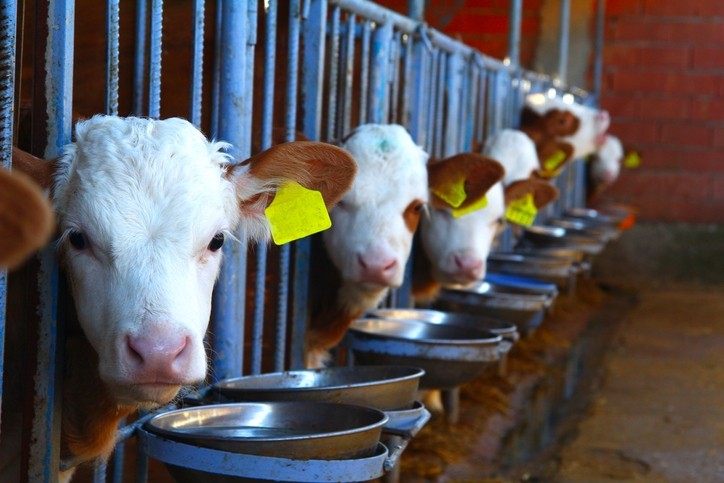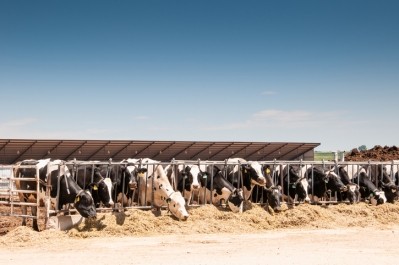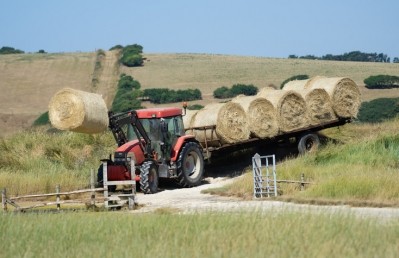special edition: dairy feed trends
Study: Starch source influential in dairy cow diets

A team of researchers from the University of Paulo in Brazil explored the relationship between crude protein (CP) degradability, the type of processed corn used in dairy cattle diets and the influence both had on milk protein stability and composition.
They published the study in the Journal of Dairy Science.
“The present study aimed to evaluate the effect of corn processing and CP degradability on digestive metabolism, lactation performance, and milk composition and stability of lactating dairy cows,” the researchers said.
They concluded that CP degradability recommendations of diets may depend on the starch source and its ruminal availability, and that nutritional models should take corn processing into account or even total rumen-digestible carbohydrates as regards determining the rumen degradable protein (RDP) and rumen undegradable protein (RUP) level.
They found there was an interaction between the crude protein degradability and the type of processing used in terms of impact on dry matter intake (DMI). Cows on a diet with ground corn (GC) that had low degradability ate more than when the corn had higher CP degradability.
Cows fed diets with ground corn and increased CP degradability had less milk yield (MY), lactose content and heat coagulation time (HCT), although no differences were seen among diets made with steam-flaked corn (SFC), they said. However, diets with SFC boosted total-tract digestibility of dry matter and starch while lowering B-casein levels.
“Cows fed low-CP degradability diets had higher glycosylated K-CN content (% total κ-CN) and MES [milk ethanol stability], as well as milk protein content, 3.5% fat-corrected milk, and efficiency of N [nitrogen] for milk production, than cows fed high-CP degradability diets,” they said. “Therefore, GC and high-CP degradability diets reduced milk production and protein stability.”
Why focus on milk protein stability?
The testing of milk ethanol stability (MES) has been used in the dairy industry to estimate milk heat stability issues stemming from a change in milk acidity due to microbial spoilage, the researchers said.
The MES test is used as an on-farm milk quality check.
However, there also are other factors that alter MES, they said. Milk samples with normal acidity also can have ethanol instability. Other factors involved could include nutrition, metabolic disorder and cow genetics.
Nutrient deficiency may lower MES as feed restriction increased the permeability of “mammary gland cell tight junctions” and allows for ion passage from blood into milk, they said.
“The increase of iCa [ionic calcium] in milk reduces the negative charge of casein micelles and the strength of electrostatic repulsion between them, which facilitates milk coagulation as determined by an ethanol test."
Barbosa et al. (2012) reported that ethanol-unstable milk had lower concentration of K-CN than milk ethanol-stable samples, reported the authors.
The expression of casein subunits can be altered by the ruminal degradability of protein and starch, they added.
Acidification in the rumen or blood also have been linked with milk instability based on the increased concentration of iCa as a response to compensate for higher blood acidification, the researchers said.
"Both nutrient deficiency and its excess due to higher NFC sources (resulting in ruminal acidosis) may be associated with unstable milk,” they added.
“However, it is still unknown if milk instability can occur only as a consequence of casein subunit proportion changes or if iCa concentration must be increased to reduce MES,” they said. It also is unclear if nutrient deficiency and blood acidification alter milk stability in the same manner, said the authors.
Previous research has noted that corn process can alter the digestibility of starch along with propionic acid and microbial protein production, they said. But, too much rumen-digestible starch has been linked to a heightened risk of ruminal acidosis, lower milk production and reduced milk stability.
The degradability of dietary crude protein also can establish if microbial protein yield along with RDP and RUP amounts need to be altered to provide necessary microbial nitrogen and amino acid levels for the cow.
Corn process and crude protein degradability can influence lactation performance and nitrogen (N) use efficiency, the researchers said.
“However, it is still unclear what the optimal RDP and RUP levels are according to the carbohydrates sources of the diet, which must meet N and AA requirements for microbial growth, optimizing N utilization and cow performance and providing milk protein stability for the dairy industry."
“We hypothesized that steam-flaked corn (SFC) has higher starch digestibility compared with ground corn (GC) and, consequently, results in more energy for milk synthesis,” they said. “However, SFC diets increase ruminal acidification and milk iCa concentration, which reduce MES and milk heat coagulation time (HCT) at 140°C. Moreover, RDP and RUP levels to optimize lactation performance, efficiency of N utilization, and milk composition and stability depend on corn processing.”
Feeding trial
In the feeding trials, 20 cows were fed one of four diets for a 21-day period before being rotated to another of the experimental feeds, the researchers said. The initial 14 days were for adaptation and sampling was done during the last 7 days of the feeding period.
The diets included a diet made with ground corn and with highly degradable CP (107 g of RDP/kg of dry matter (DM) and 51 g of RUP/kg of DM); a ground corn diet with CP of low degradability (95 g of RDP/kg of DM and 63 g of RDP/kg of DM); a diet with steamed flaked corn (SFC) and highly degradable CP; or a diet with SFC and CP with low degradability.
“Diets were based on corn silage as the sole forage source, at 49.5% of diet DM, along with SESM [solvent-extracted soybean meal], urea, whole raw soybean, citrus pulp pellets, GC, SFC, mineral-vitamin supplement, and HTSM [heat-treated soybean meal],” they added.
Cow body weight was checked on day 21 of each feeding period, the researchers said. Feed ingredients and refusals were sampled during the first four days of each feeding period and fecal and urine samples were taken for analysis during the initial three days.
Milk samples were gathered on the third and fourth day of the sampling period – day 17 and 18 overall – and the N productive efficiency was calculated, the researchers said. Milk was checked for allantoin and creatinine and total purine derivatives (PD) were established.
Milk yield was noted from days 15 to 21 of the feeding period and additional samples were gathered to check fat, lactose, total solids (TS), casein and CP, they said. The iCa concentration also was determined and an MES analysis was done.
“The MES results were defined as the lowest ethanol concentration in which coagulation of milk samples occurred,” they added.
Blood samples also were gathered for analysis, they said.
Results
Dry matter intake and HCT increased for cows when they received a diet with ground corn and low CP degradability but the RDP to RUP ratio was not altered, the researchers said. Cows getting diets with SFC did not demonstrate a change in dry matter intake, milk yield (MY) or HCT.
“We noted an effect of corn processing on total apparent digestibility, considering that cows fed SFC diets had higher DM, starch, CP, and EE [ether extract] digestibility than cows fed GC diets,” they said. “We found an interaction between CP degradability and corn processing on total apparent NDF digestibility, as it was reduced when cows were fed GC and low CP degradability compared with other diets.”
However, there was no interaction found between corn processing and CP degradability in reference to FCM, but cows on low CP degradability diets had higher FCM than those on diets with high CP degradability, they said.
Cows on ground corn diets had more milk lactose content and less lactose yield when CP had low degradability, but lactose did not alter for cows on the SFC diets, they said. Cows on diets with low CP degradability had increased milk protein content, higher milk protein yield and a higher MES.
“We noted no effect of corn processing or CP degradability on milk pH, iCa concentration, and butterfat content and yield,” the researchers said. “Milk content of TS and SNF [solids not fat] was not affected by corn processing or CP degradability, but daily yield of TS and SNF was higher when cows were fed low CP degradability than when fed high CP degradability.”
Similarly, casein subunits and whey proteins were not altered by diet, they said. Cows on the SFC diets tended to have less B-CN and more B-LG.
“When cows were fed low-CP degradability diets, higher milk secretion of N (g/d) was observed as well as higher N productive efficiency than cows fed high-CP degradability diets,” they said. However, blood metabolic outcomes were similar across all diets.
“Our results suggest that changes in milk protein composition can change MES and milk HCT, probably as a response to nutrient flow and their quality to milk yield (e.g., AA availability for milk protein synthesis),” they said. “The use of SFC diets increases total apparent digestibility of DM, starch, CP, and EE, as well as the efficiency of N utilization for milk production.”
Source: Journal of Dairy Science
Title: Effect of dietary crude protein degradability and corn processing on lactation performance and milk protein composition and stability
Authors: C. Martins, D. Fonseca, B. Alves, M. Arcari, G. Ferreira, K. Welter, C. Oliveira, F. Rennó, M. Santos
DOI: https://doi.org/10.3168/jds.2018-15553
















